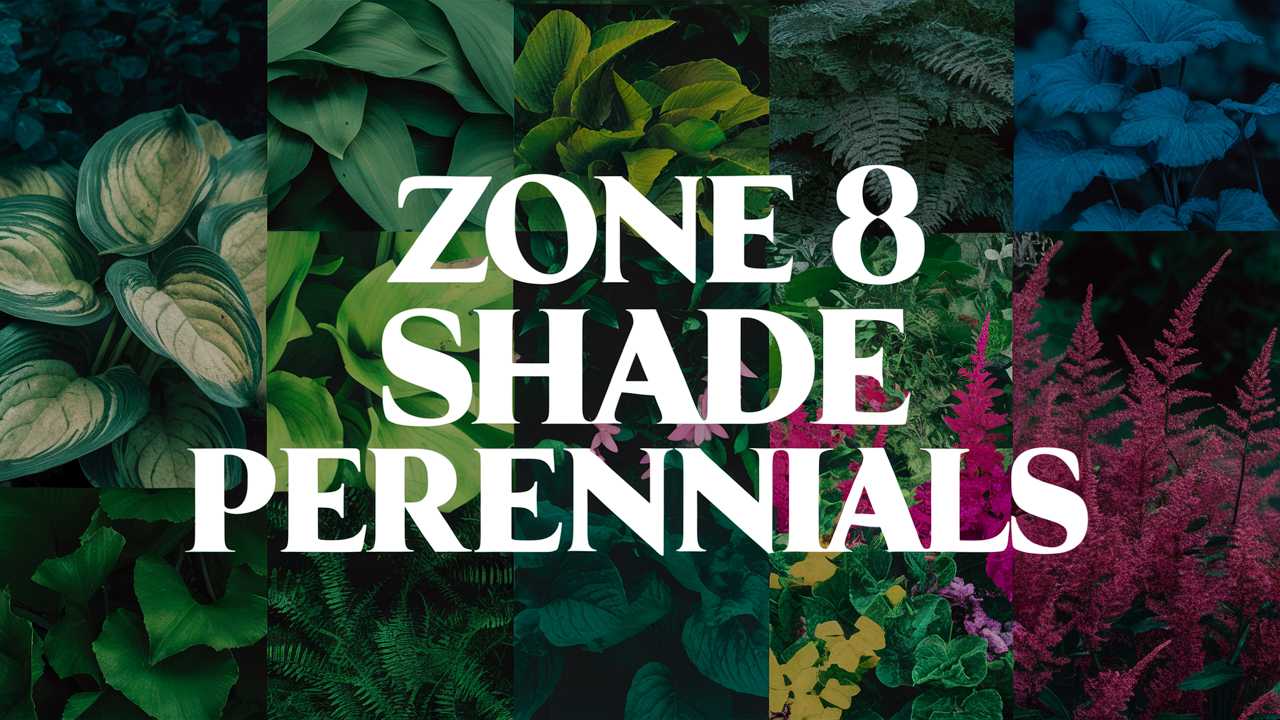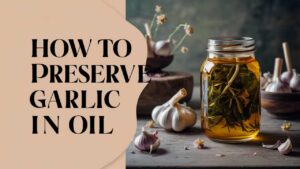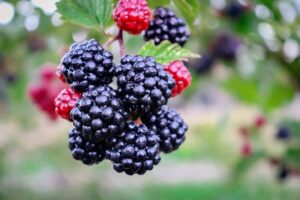In this post, we’ll explore some of the best shade-loving perennials suitable for Zone 8, each with its unique beauty and characteristics.
Acanthus
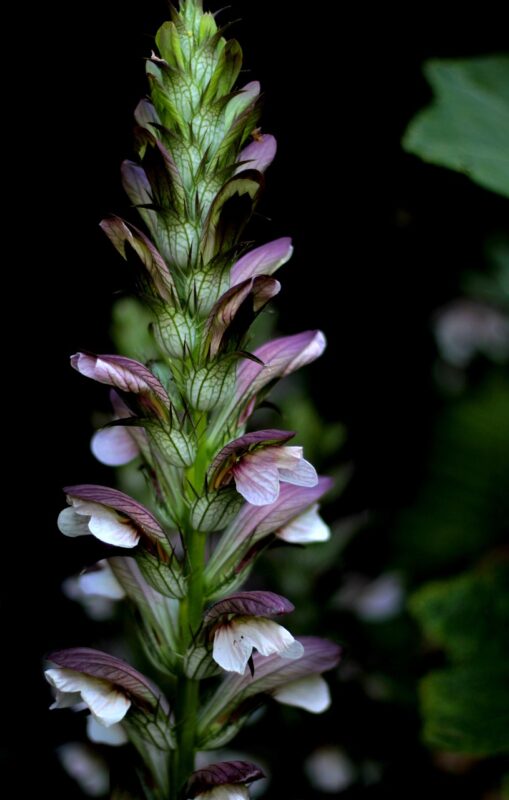
When it comes to dramatic foliage and flower spikes, Acanthus is a standout. Known as the bear’s breeches, this hardy perennial thrives in partial to full shade and can tolerate a variety of soil types, although it prefers well-drained soil. The bold, spiky leaves provide an architectural element to shady gardens, while the stunning white and purple flowers that bloom in late spring add a touch of elegance.
Acanthus is also prized for its low maintenance needs, making it an ideal choice for both novice and experienced gardeners. Additionally, its deer-resistant qualities ensure that your garden remains lush and attractive without unwanted nibbling.
Ajuga
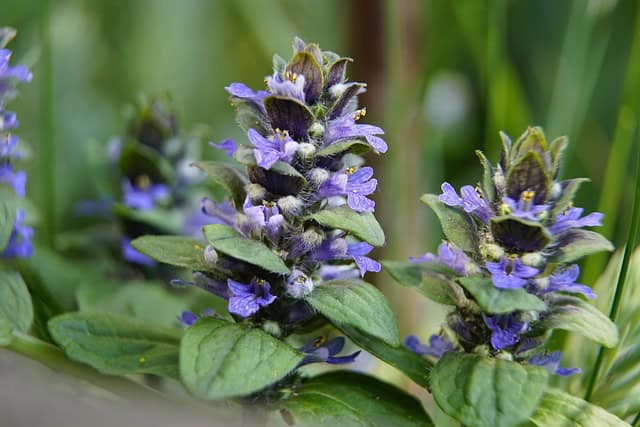
Ajuga, or bugleweed, is a low-growing ground cover that flourishes in shady areas. Its vibrant foliage can range from deep green to rich purple, with many varieties boasting colorful flowers in spring that can attract bees and other pollinators. Ajuga is perfect for filling in spaces where grass struggles to grow, providing a lush carpet that can suppress weeds effectively.
Planting Ajuga can also enhance vertical interest when used to outline pathways or border larger plants. It thrives in a variety of soil conditions but favors moist environments. With its compact size and charming appearance, Ajuga is an excellent choice for anyone looking to create a cozy, inviting shade garden.
Beautyberry
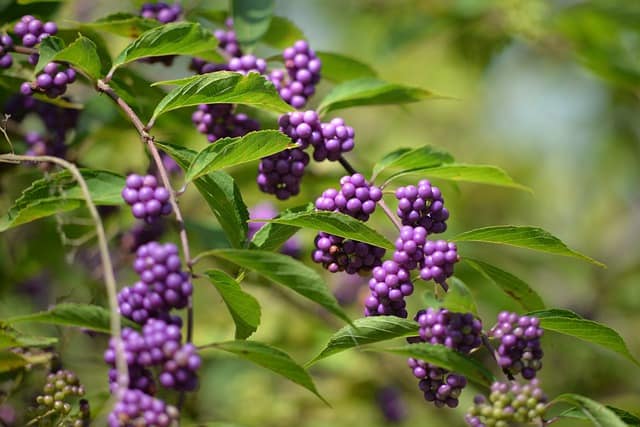
One cannot overlook the charm of Beautyberry, especially in the fall when this shrub reveals its stunning clusters of purple berries. With its arching branches and lush green leaves, Beautyberry brings life to the shade with its vibrant color contrast. It does best in well-drained soil with moderate moisture.
While its small white flowers may not be particularly striking, the subsequent berry display is worth the wait. Birds will love feasting on the berries, making this plant a great addition for those looking to attract wildlife. Additionally, Beautyberry’s adaptability gives it a reliable presence in shady spots, ensuring continuous interest throughout the seasons.
Bleeding Hearts
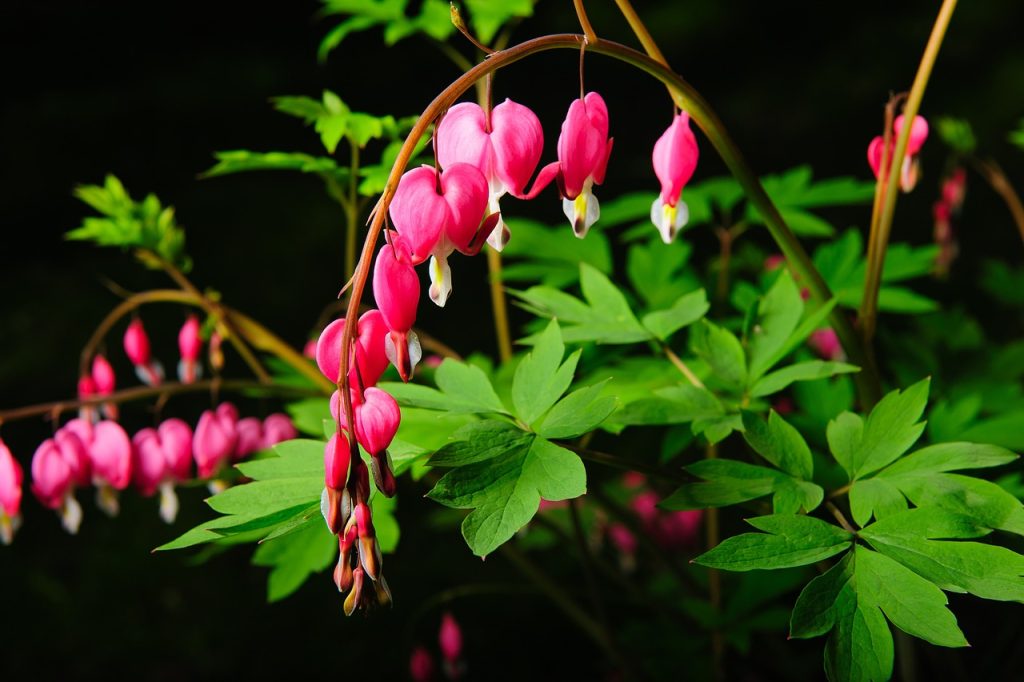
If you’re searching for a romantic touch in your shade garden, look no further than Bleeding Hearts. With heart-shaped pink flowers that dangle delicately from arching stems, this perennial is a classic for shady spots. It thrives in moist, well-drained soil and does well under the canopy of trees or in less sunny areas.
Beyond its extraordinary blooms, Bleeding Hearts also offers lush green foliage, which remains vibrant throughout the growing season. Once established, these plants can spread effectively, making them perfect for filling in gaps in your garden. Their gentle demeanor and stunning flowers truly make them a must-have for any shade lover.
Camellia
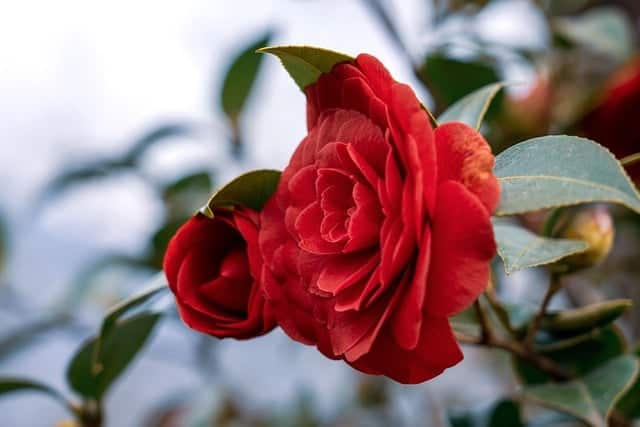
A Camellia can transform your garden into a lavish retreat. Known for their stunning blooms in shades of red, white, and pink, these evergreen shrubs add structure and beauty, even in the winter months when many other plants fade away. Camellias flourish in rich, acidic soil and prefer a sheltered spot that provides dappled sunlight.
The key to successfully growing Camellia lies in maintaining adequate moisture levels. With their glossy leaves and rich colors, Camellias can be used as focal points, borders, or understory plants. Their fragrant blooms are not only visually stunning but also exude a subtle scent, enhancing your garden’s sensory experience.
Cephalotaxus
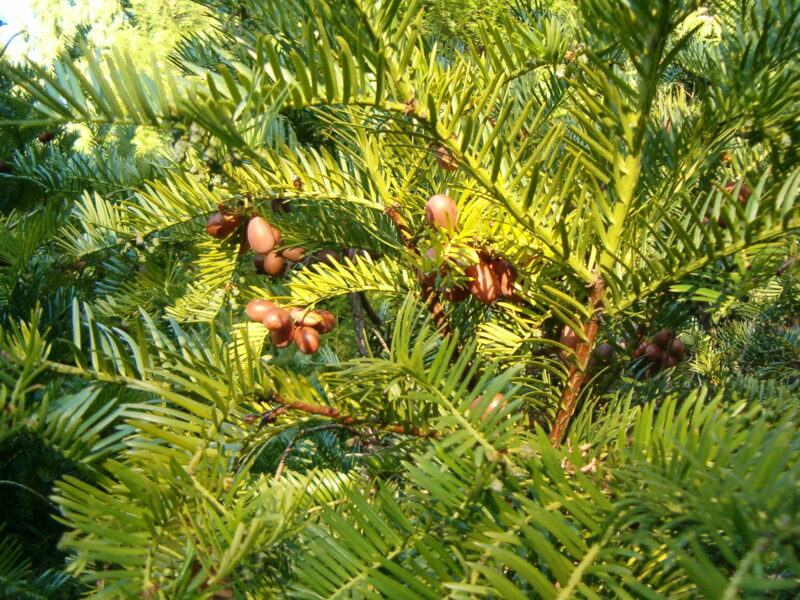
Also known as the plum yew, Cephalotaxus is a versatile evergreen that thrives in the shade. Its dark green, needle-like leaves offer a unique texture, providing year-round interest. This perennial is drought-tolerant once established, making it an easy addition for those who may forget to water regularly.
Cephalotaxus can be used as a low hedge or in foundation plantings, effectively enhancing the depth of your shade garden. Its slow growth and low-maintenance qualities make it suitable for busy gardeners, while its structural presence adds sophistication to your landscape.
Chinese Mahonia
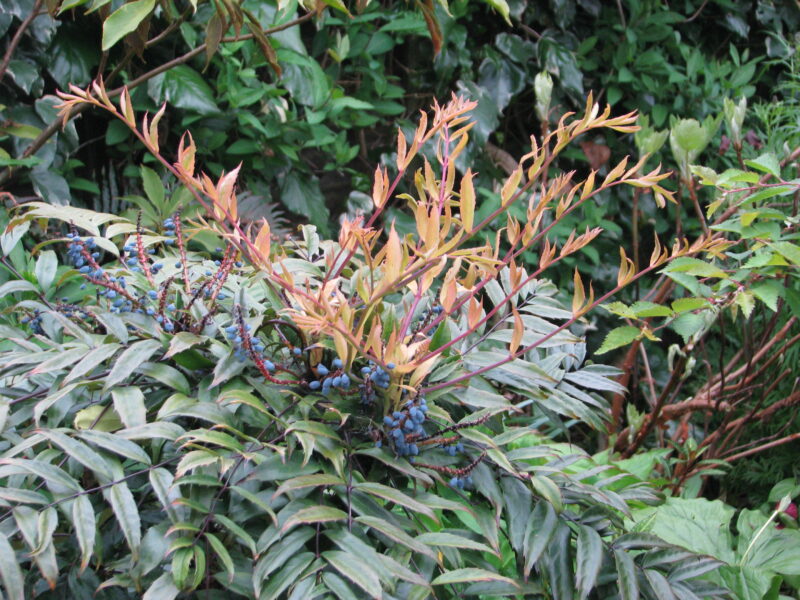
The spiky leaves of the Chinese Mahonia add a touch of drama to shady spaces. With its clusters of yellow flowers appearing in late winter to early spring, this perennial is a beacon of hope during colder months. Following the blooms, dark blue berries emerge, providing food for birds and visual interest well into the summer.
Chinese Mahonia is tolerant of a range of soil types but prefers acidic conditions. Its ability to thrive in dry shade makes it a resilient option for challenging areas of your garden. Additionally, its bold foliage can serve as an eye-catching background for smaller shade plants.
Daphne
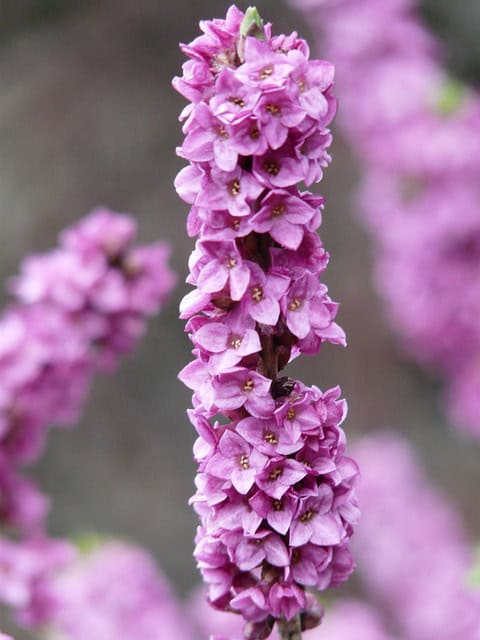
Daphne is often celebrated for its intoxicating fragrance, making it a prized addition to shade gardens. This evergreen shrub typically features clusters of white or purple flowers in early spring, filling the air with a sweet aroma that enchants passersby. It prefers well-drained, slightly acidic soil and should be protected from harsh sunlight.
While it may be more challenging to grow than some other shade perennials, its stunning blooms make the effort worthwhile. Daphne’s compact form makes it ideal for borders or containers, allowing you to enjoy its beauty and fragrance up close.
Daylily
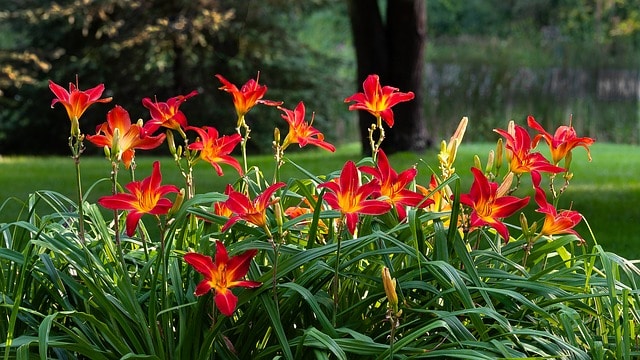
Known for their versatility, Daylilies thrive in various conditions, including partial shade. While they prefer more sunlight, many varieties can adapt happily to shadier spots. Their trumpet-shaped flowers come in countless colors and patterns, providing nearly continuous blooms from late spring to early summer.
Daylilies are robust and resilient, requiring minimal attention once established. Their grass-like foliage adds a softness to shady areas, blending seamlessly with other perennials. This adaptability, combined with their striking visuals, makes Daylilies a favorite in gardens across the nation.
Edgeworthia

A somewhat less common choice, Edgeworthia, or paperbush, is a true delight for shade gardens. With unique, fragrant flower clusters that bloom in late winter to early spring, it adds a significant touch of interest when many other plants lie dormant. The soft, silvery-blue leaves create a delicate backdrop for the stunning yellow flowers.
Edgeworthia prefers rich, well-drained soil and dappled sunlight, making it perfect for those shadier corners. Its unusual flowering time and sweet scent ensure it stands out, while its overall hardiness adds to its appeal, especially in mixed arrangements or as a focal point.
Golden Japanese Forest Grass
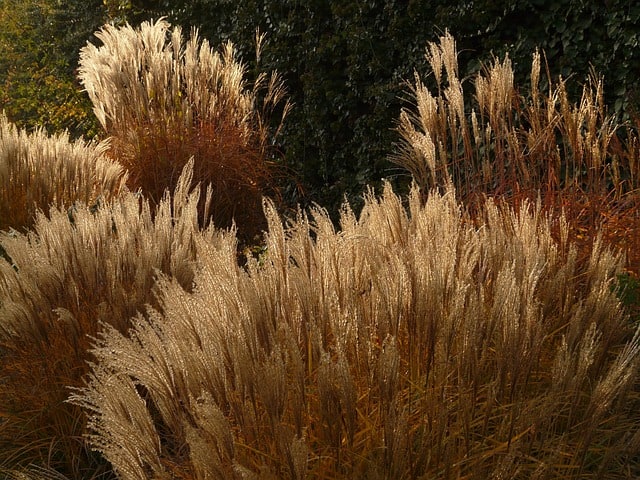
For an eye-catching ground cover, Golden Japanese Forest Grass (Hakonechloa macra) should be in your garden plans. Renowned for its finely textured, cascading golden-green leaves, it thrives in partial to full shade and adds a unique color contrast to darker greens in your garden.
This perennial grass is perfect for mass planting as it softly sways in the breeze, creating movement in your shady area. Additionally, it works beautifully in containers, providing a pop of color and texture wherever it’s placed. This forgiving and adaptable plant can flourish with minimal care, making it an excellent addition for gardeners of all skill levels.
Hellebore
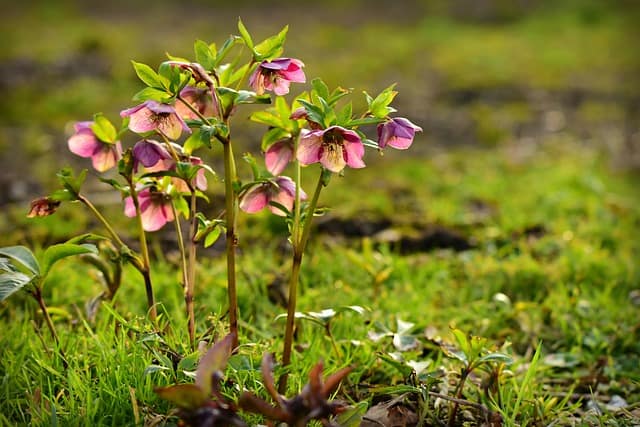
Hellebores are some of the earliest bloomers in the garden, often emerging while winter is still in the air. Boasting deeply lobed leaves and striking cup-like flowers in shades of white, pink, or even dark purple, they bring life to sparse patches of shade. They prefer well-drained soil and thrive under trees or in semi-shady areas.
One of the best attributes of Hellebores is their long flowering period, which can extend from late winter into spring, depending on the variety. Their rugged beauty and resilience make them an essential part of any shade garden, where they can thrive with little fuss.
Heartleaf Brunnera
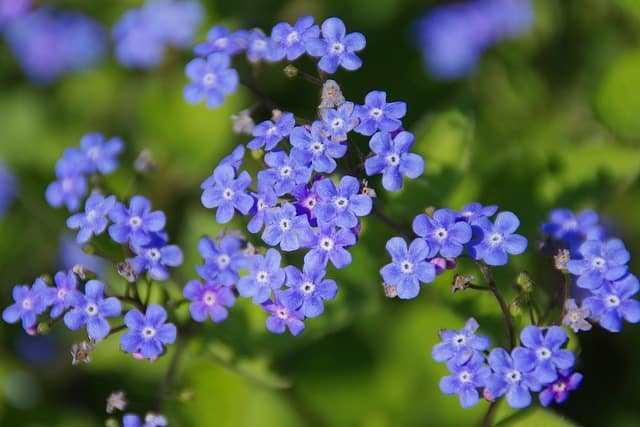
Often referred to as false forget-me-not, Heartleaf Brunnera shines in the shade with its heart-shaped leaves and small, bright blue flowers that resemble garden forget-me-nots. This perennial thrives in rich, moist soil and flourishes in partial to full shade, making it an excellent choice for woodland gardens.
Brunnera’s foliage creates an attractive ground cover, blanketing the landscape with lush greenery. After flowering, the leaves remain a beautiful feature throughout the growing season. Its ability to thrive in heavy shade and its unusual charm make it a beloved addition among shade gardening enthusiasts.
Hostas
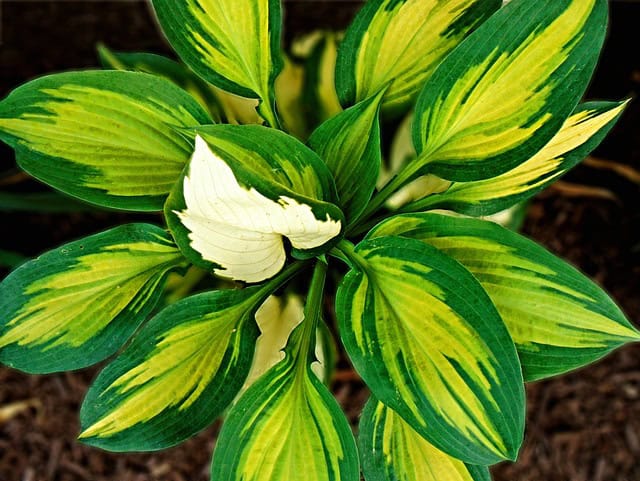
One of the quintessential shade perennials, Hostas are unmatched in their diversity. Available in a myriad of sizes, shapes, and colors, these leafy wonders can accent any dark corner of your garden. They thrive in moist, well-drained soil and offer stunning foliage ranging from bright greens to variegated patterns.
Hostas can also produce flower spikes in mid-summer, adding another layer of interest to your garden. Their lush, expansive leaves create a rich backdrop for smaller flowering plants, making them essential for creating depth and contrast. With their ease of care, Hostas are a fantastic choice for anyone looking to create a vibrant shade garden with minimal effort.
Illicium
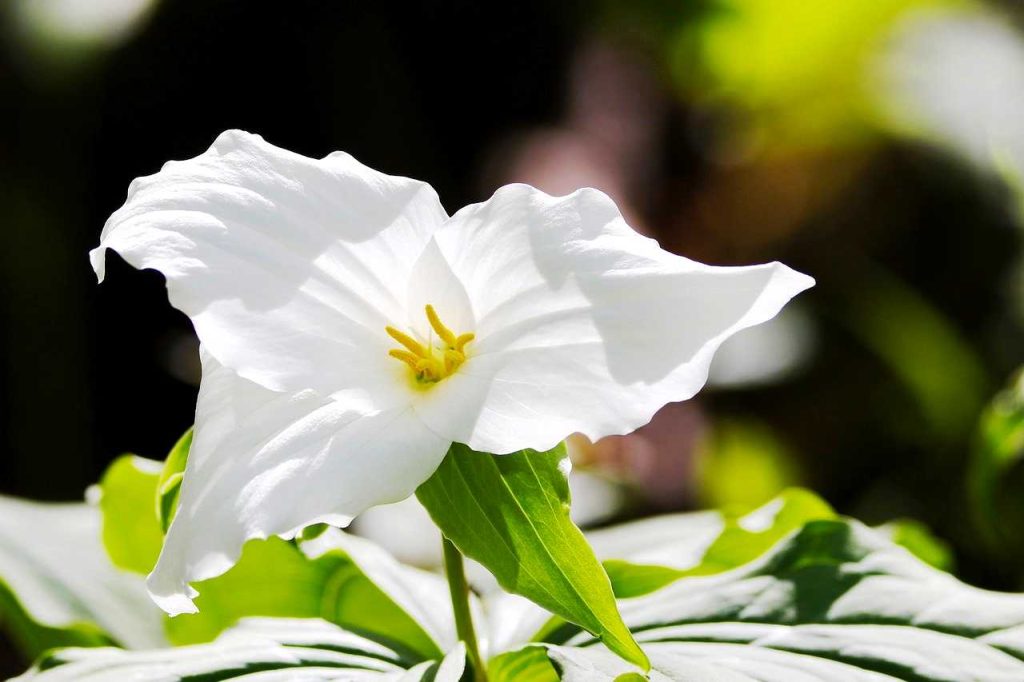
Illicium, commonly known as star anise, is a unique evergreen that offers both visual interest and a soothing fragrance. With its shiny leaves and subtle star-shaped flowers in spring, this plant stands out among traditional shade perennials. It prefers well-drained soil and thrives in areas with filtered sunlight.
One of the remarkable features of Illicium is its low-maintenance existence. It can handle poor soil and varying moisture levels, making it a resilient companion in the garden. The addition of an Illicium can create a layered visual dynamic, perfect for enhancing the beauty of a shaded corner.
Japanese Fatsia
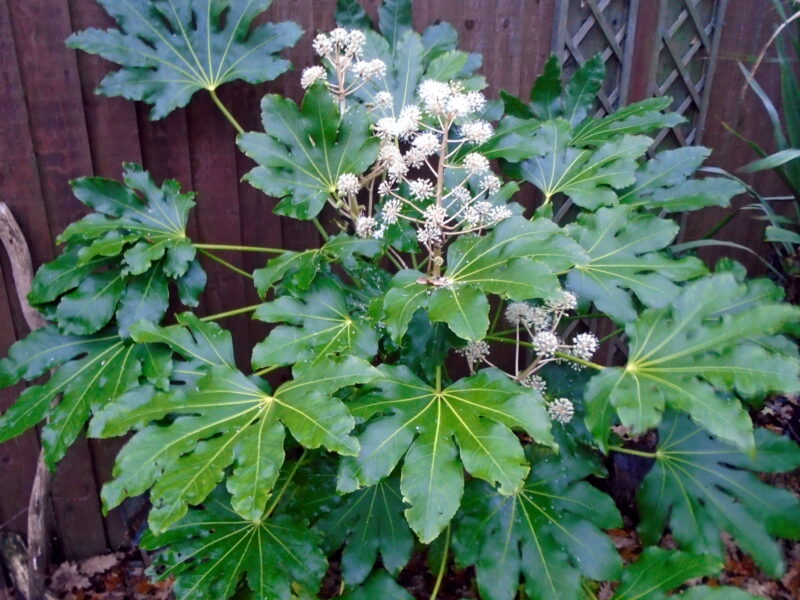
Known for its glossy, palmate leaves, the Japanese Fatsia is an impressive plant that asserts its presence in any shade garden. This evergreen perennial thrives in moist, well-drained soil and does well even in deep shade. With large, dramatic foliage, it adds a tropical feel to your landscape.
Fatsia is also relatively low-maintenance and can tolerate drought once established. Ideal for framing pathways or as a specimen plant, its striking leaves create a lush backdrop, enhancing the natural beauty of other shade-loving companions.
Kerria

With its bright yellow flowers that bloom from spring to early summer, Kerria offers a cheery splash of color in shaded areas. This deciduous shrub has arching branches adorned with green, finger-like leaves, providing a soft flowing appearance. It thrives in moist, well-drained soil and can bring life to even the shadiest corners.
Kerria is also relatively low-maintenance, requiring minimal pruning to maintain its shape. It performs best as a flowering hedge or accent, where its vibrant color can be appreciated. For gardeners seeking a lively pop of sunshine in shaded areas, Kerria is a top contender.
Lungwort

With unique spotted leaves and delicate flowers, Lungwort (Pulmonaria) is a delightful presence in any shade garden. This perennial thrives in moist, rich soil and can withstand even the most shaded conditions. Its foliage often features beautiful silver spots, providing visual intrigue long after its blooms have faded.
In spring, Lungwort produces clusters of small blue, pink, or white flowers that can bloom before the leaves fully emerge, creating exquisite splashes of color amidst the greenery. Its ability to adapt to various soil types and conditions makes Lungwort an essential asset in the shade garden.
Oakleaf Hydrangea
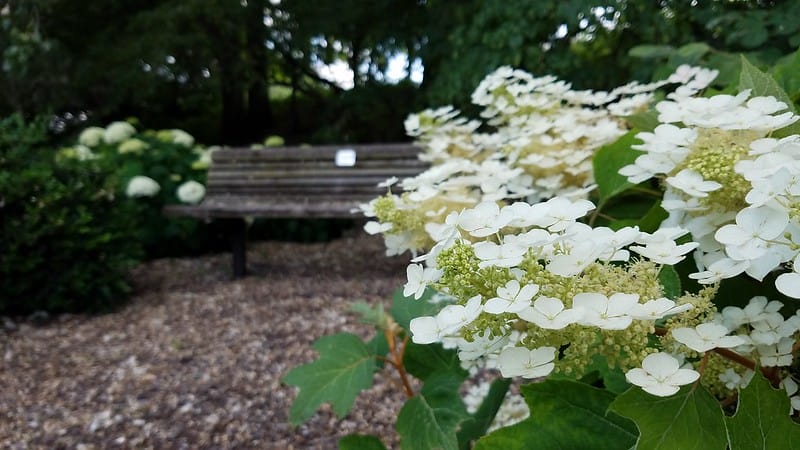
The majestic Oakleaf Hydrangea is a standout choice for a shade garden, providing stunning blooms and gorgeous fall foliage. This shrub blossoms with large clusters of white flowers that gradually turn pink, offering drama and elegance throughout the summer months. Its lobed leaves resemble those of an oak tree, adding unique texture to the landscape.
Preferring rich, well-drained soil, Oakleaf Hydrangeas flourish in partial shade and are relatively easy to grow. Once the flowering season is over, the leaves turn a deep mahogany, ensuring your garden retains visual interest even in autumn. Its striking presence makes it a must-have for any shade-loving gardener.
Pineapple Lily (Eucomis)
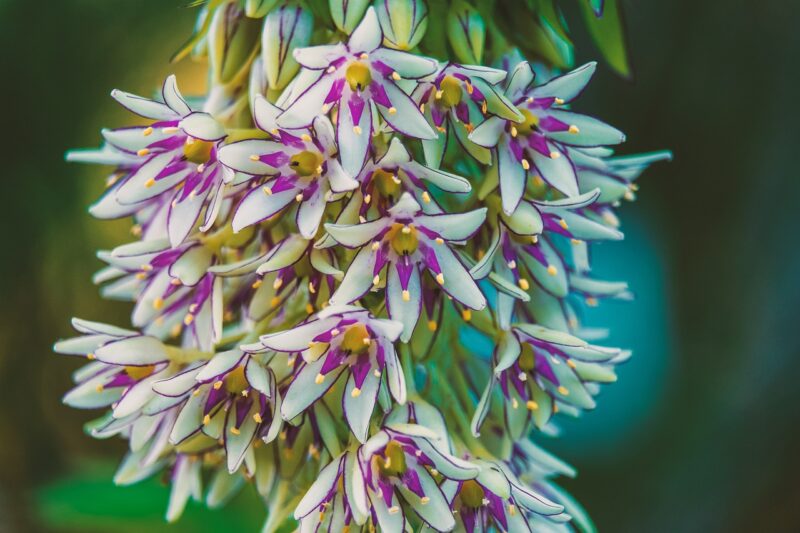
The Pineapple Lily, or Eucomis, is an unusual and captivating addition to shaded gardens. Its striking rosette of spiky leaves resembles a pineapple crown, while its tall flower spikes erupt in unique clusters of star-shaped flowers. This perennial prefers well-drained, moist soil and performs well in partial shade.
Pineapple Lily stands out in the garden, offering a dramatic vertical element and is relatively low-maintenance. It works beautifully when mixed with ferns or other shade-friendly plants, creating an exotic feel in your landscape. For those looking to add flair and intrigue to their shade gardens, Pineapple Lily is a fantastic choice.
Shasta Daisy
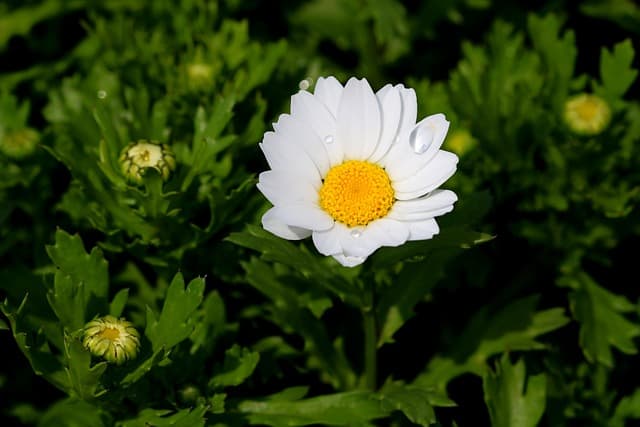
The Shasta Daisy is known for its cheerful white petals and golden centers, providing a stunning contrast in shady spots. While these flowers prefer full sun, many hybrid varieties can adapt to partial shade. Their ability to flourish in various soil types makes them versatile and easy to grow.
With a lengthy bloom period from late spring to early summer, Shasta Daisies attract butterflies and pollinators, enhancing the liveliness of any garden. They make lovely border plants, especially when planted in groups that create a striking visual display among taller, leafy companions.
Siberian Bugloss
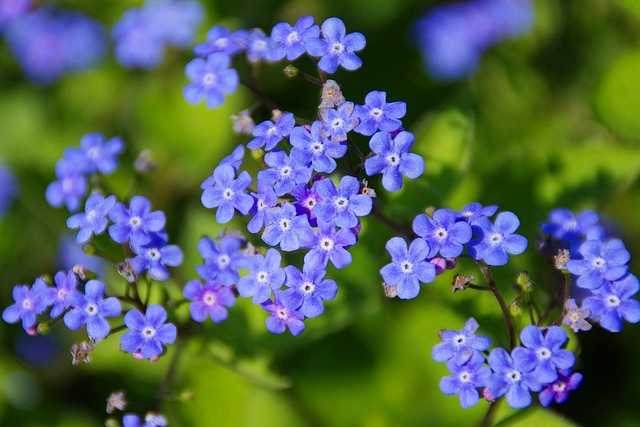
Siberian Bugloss, also known as Brunnera macrophylla, is a remarkable ground cover for shady gardens. Its heart-shaped, large leaves can vary from deep green to silver, creating an eye-catching carpet-like effect. In spring, it produces small, bright blue flowers that can brighten even the shadiest corners.
This perennial is particularly valued for its adaptability to various soil conditions and its ability to thrive in full shade. Siberian Bugloss works exceptionally well as a filler plant among larger perennials and shrubs, providing texture and color to a harmonious shade garden.
Spotted Deadnettle
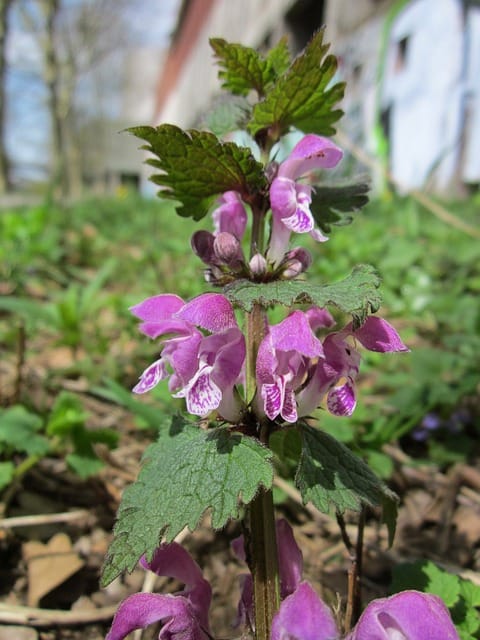
For those looking for a more unusual ground cover, Spotted Deadnettle, or Lamium, is an excellent choice. This low-growing perennial features vibrant foliage with silvery patterns and produces small flowers in shades of purple, pink, or white during late spring and early summer.
Spotted Deadnettle is known for its robust nature, thriving in both dry and moist soils. Its sprawling form helps control weeds while providing a carpet-like effect that looks great beneath taller plants. With its attractive foliage and reliable performance in shade, it’s a wonderful addition to any garden.
Phlox
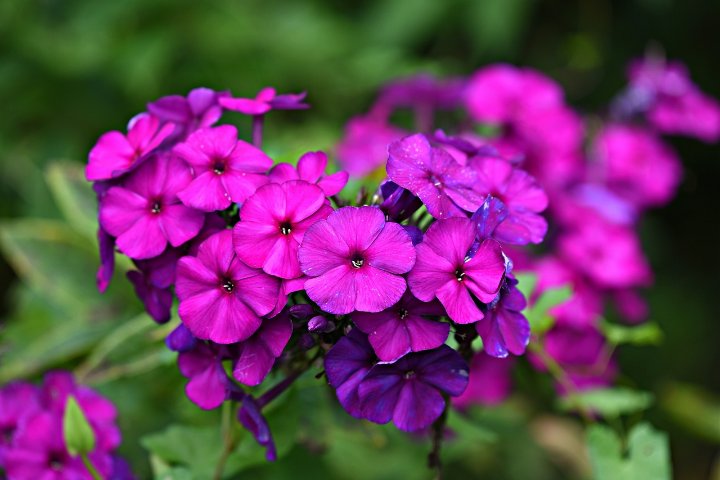
Tall Garden Phlox offers beautiful clusters of color during the summer in semi-shade locations. Their fragrant flowers come in an array of colors, including pink, purple, and white, attracting beneficial insects like butterflies. They prefer fertile, well-drained soil and do best with some afternoon shade, particularly in hotter areas.
The upright growth habit of Tall Garden Phlox makes it great for back-of-border placements, ensuring they stand proudly and draw attention. With consistent watering and occasional deadheading, these perennials will produce stunning blooms year after year—allowing you to enjoy their beauty effortlessly.
Toad Lily
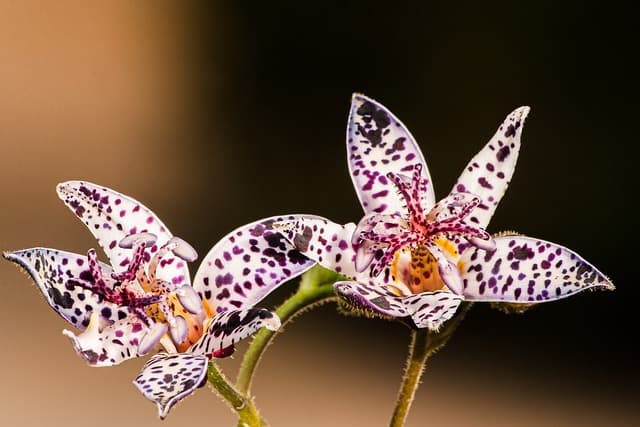
Toad Lily is an exotic perennial that adds unique charm to your shade garden. With its intricate, spotted flowers that appear in late summer and early fall, it provides stunning interest at a time when many other perennials start to fade. It thrives in moist, well-drained soil with shade or partial shade.
This perennial reaches a modest height, making it an excellent choice for incorporating into mixed borders. Its cascading growth habit combines beautifully with taller plants, creating an appealing contrast. Toad Lilies’ unexpected blooms are a conversation starter and an absolute delight for those exploring the depths of shade garden planting.
Conclusion
Creating a lush and inviting shade garden in Zone 8 is not only possible but immensely rewarding. With such a diverse array of perennials at your disposal—from the drama of Acanthus to the whimsy of Toad Lily—there is no shortage of options to enhance your outdoor space.


